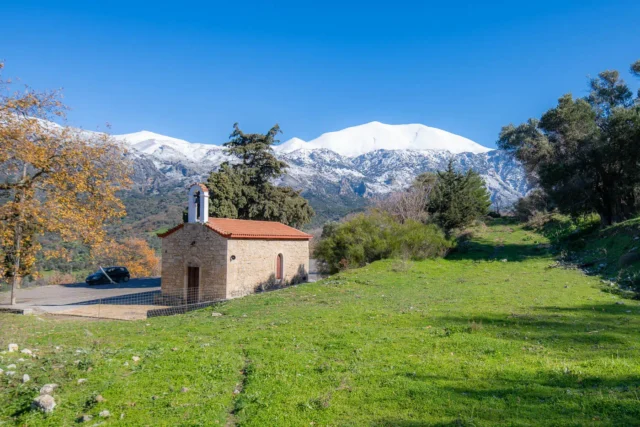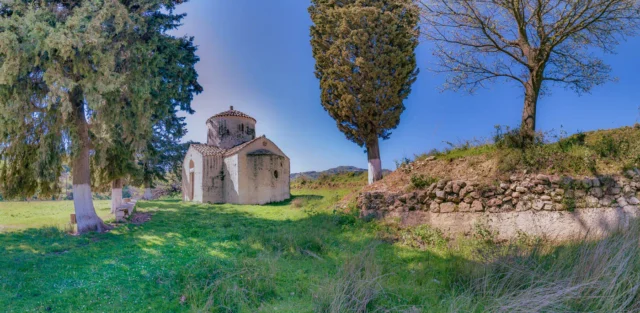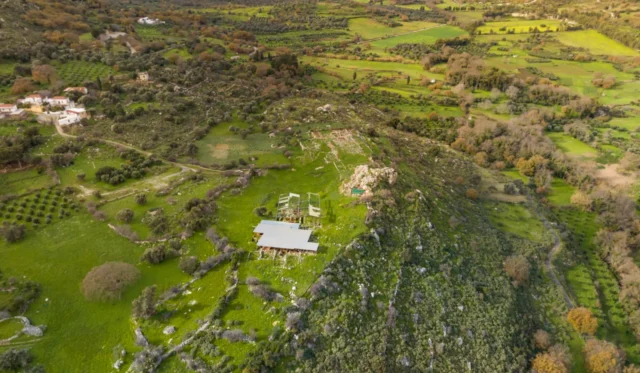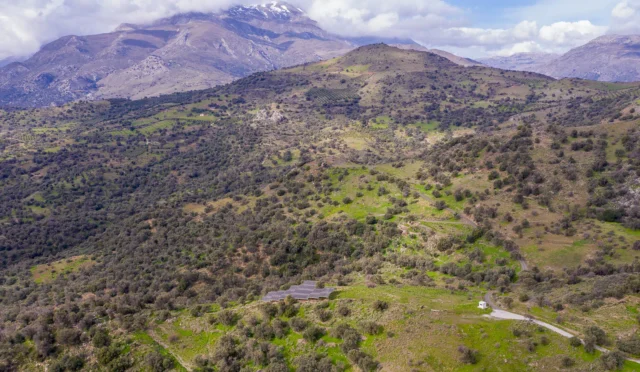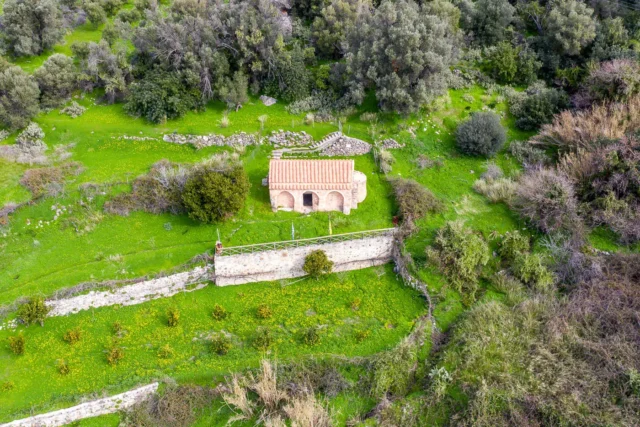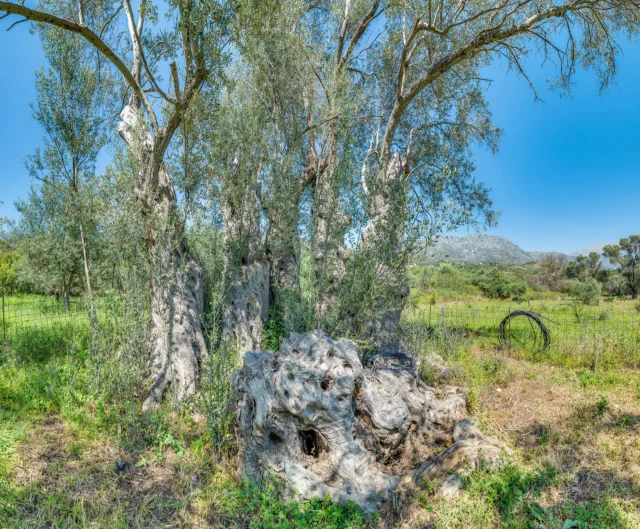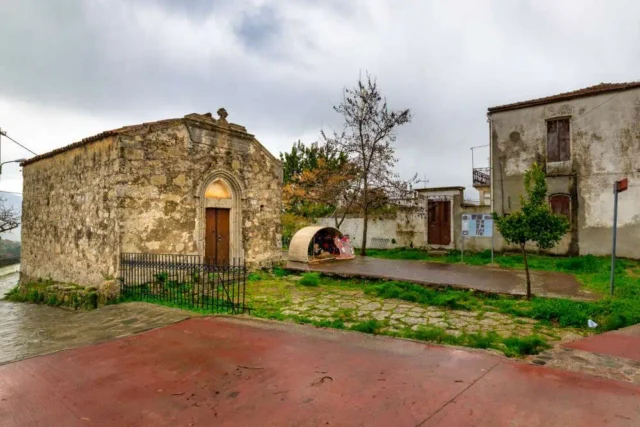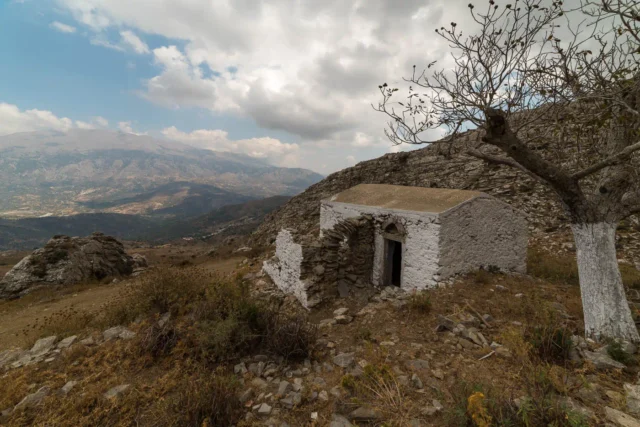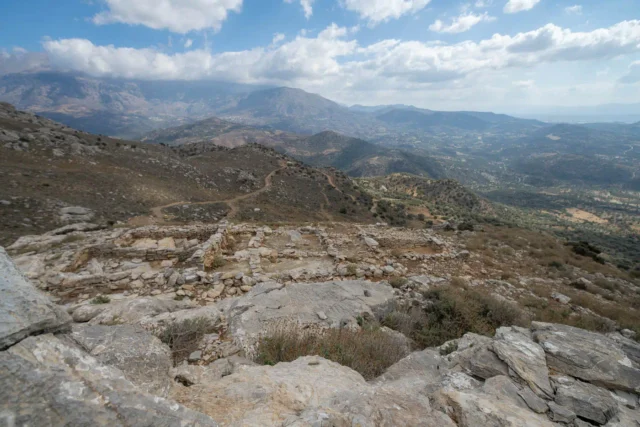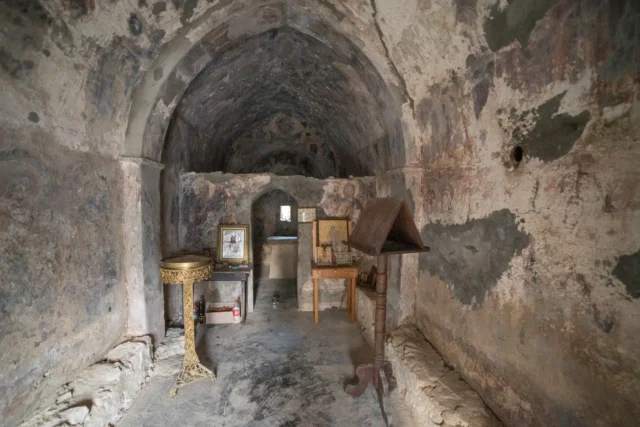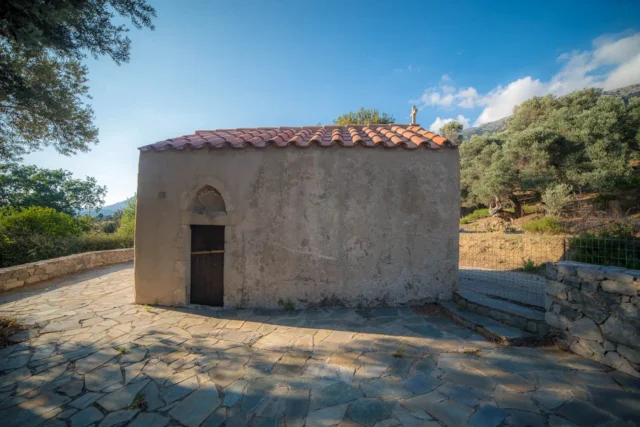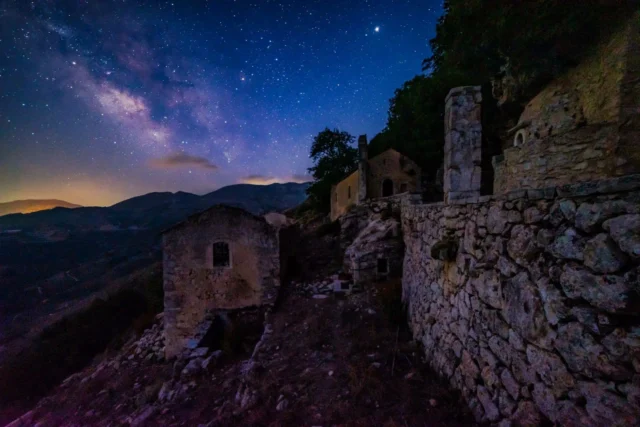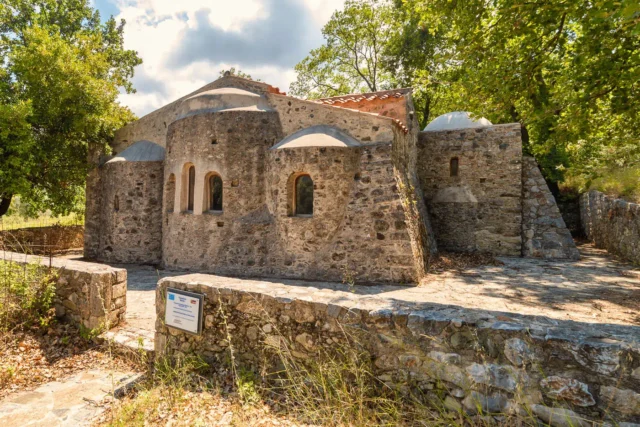71
listings found
Categories
Active filters:
Agios Nikolaos, and Transfiguration of Christ churches in Elenes
In the Amari Valley of Crete, the village of Elenes features the Church of Agios Nikolaos, a dual-aisled Byzantine structure dedicated to St. Nicholas and St. Anne. The church is significant for its extensive cycle of 13th-century frescoes, which portray scenes from the life of Christ and other saints in a style marked by expressive figures and rich colors. Nearby are the ruins of another Byzantine church, dedicated to the Transfiguration of Christ, which also retains fragments of its frescoes.
Koules in Meronas
The Koules of Meronas, also known as the Koules of Apostoli, is a significant 19th-century Ottoman fortification in Crete. Constructed between 1866-1869 at the strategic entrance of the Amari Valley and the exit of the Potamon Valley, its purpose was to monitor and suppress Cretan rebels. The structure was a large, central Koules (Kisla), composed of two buildings with bastions, serving as a military headquarters during the Cretan Revolution of 1866-1869. Though partially ruined, substantial portions of its walls remain.
Agia Paraskevi in Kalogerou
Agia Paraskevi, near Kalogerou in Amari, Crete, is a 16th-century Venetian-era church with a free cross floor plan and a dome on a cylindrical drum. Reconstructed in 1888, it retains original Venetian frescoes, notably in an arcosolium depicting Christ and kneeling figures, including a Georgios Chortatzis. The church's architecture and frescoes, along with the Chortatzis burial, highlight Venetian influence in Crete. The identity of Georgios Chortatzis, possibly linked to archons or a playwright, remains debated. The church is active and open to visitors.
Monastiraki Minoan Palace
Situated in Crete's Amari Valley, a strategic corridor, this site was a significant Minoan Protopalatial administrative center (c. 2100-1700 BC). Covering over 300,000 square meters, it includes large-scale buildings, vast storage areas, workshops, and multiple sealings archives that reveal its economic power. Artifacts, including sealings, show a deep integration into the broader Minoan trade network, with notable connections to the palace at Phaistos.
Panagia in Patsos
Located in Patsos, Amari, this ruined 14th-century church is a significant Byzantine monument in Rethymno. Its unique cross-in-square architecture blends Byzantine and Western elements, a style uncommon for the Cretan countryside. The interior was adorned with high-quality frescoes, considered fine examples of late Byzantine art, depicting the Virgin Mary, Saint Nicholas, and the Communion of the Apostles. Though damaged by an earthquake, its surviving elements attest to the cultural flourishing of Crete during this period.
Minoan villa in Apodoulou
An archaeological site in Amari, 20km from Phaistos, significant during the Protopalatial period (1900-1700 BCE). Positioned on a strategic route to the north coast, initial work by Spiros Marinatos in 1934 and later by Louis Godart revealed a complex destroyed by earthquake and fire. Excavated buildings (A-G) include residential quarters, workshops, and kitchens. Block A was a central hub for storage and administration, confirmed by numerous pithoi and sealings identical to those found at Phaistos.
Agios Georgios Xifoforos
Agios Georgios Xifoforos, a mid-13th-century Byzantine church located near Apodoulou in Crete's Amari region, boasts well-preserved frescoes and a single-aisled, barrel-vaulted architecture. Dedicated to Saint George (Xifoforos), the church exemplifies Byzantine art and religious traditions. Its frescoes offer valuable insights into the cultural and artistic practices of the era. The church's history, potentially linked to a monastery, remains partially unclear. Today, it serves as a place of worship and pilgrimage, open to visitors interested in Byzantine architecture and religious art.
Ancient Syvritos
Ancient Syvritos, located on Thronos Kefala hill, dates from the Late Minoan III period to the early Venetian era. It was a significant Cretan city-state, known in Linear B tablets as "su-ki-ri-ta," with its own currency and territory spanning the Amari valley to Soulia port (Agia Galini). The city, a bishopric by 451 AD, features ruins of an acropolis, houses with mosaics, and water infrastructure. Artifacts, including coins depicting Dionysus and Zeus, are housed in the Rethymno Archaeological Museum, reflecting Syvritos's role in Minoan, Geometric, Archaic, Classical, Hellenistic, Roman, and Byzantine periods. The city declined by the late 8th century, leaving ruins that offer insight into Crete's history.
Panagia of Thronos
The Church of Panagia in Thronos, Crete, a single-nave Byzantine structure from around 1300 AD, stands on a 5th-6th century Early Christian basilica. Its interior features 14th-15th century frescoes and the Kallergis family coat of arms, reflecting Byzantine patronage. The church's location on Kephala hill, ancient Syvritos, highlights its strategic importance, controlling access to Phaistos and Gortyna. Thronos itself, with roots in the Late Minoan period, was a significant Roman and Byzantine center, serving as the seat of the Bishopric of Syvritos. The church remains active and open to visitors, showcasing well-preserved artistic and historical elements.
Agia Marina Kalogerou
Located in Kalogeros, Rethymno, Crete, the 14th-century Agia Marina Church is a Byzantine structure built in 1300 AD, evidenced by an inscription. It houses a rich collection of frescoes depicting scenes from the life of the Virgin Mary, the Christological cycle, the Pantocrator, and numerous saints. The church's interior frescoes, notable for their vibrant colors and carved haloes, have undergone restoration by the Ephorate of Byzantine Antiquities, though some deterioration persists. The exterior remains unrestored, covered in plaster and whitewash. Situated within the village cemetery, Agia Marina offers insights into the artistic and religious traditions of the Amari region during the Byzantine era, and its artistic style suggests connections to other regional churches. The village of Kalogeros, known for its traditional architecture, celebrates Saint Athanasios and Cyril on January 18th.
Agioi Theodoroi church in Amari
The Agioi Theodoroi Church, located in Nefs Amari, Crete, is a small, single-aisled structure with a tiled roof. Its construction date is unknown, but frescoes dated 1588 and 1731 indicate it predates the later date. The church features a bell tower depicting the Virgin Mary and is dedicated to Saints Theodore of Tyro and Theodore Stratelates, celebrated on the first Saturday of Lent. While the church remains standing, the frescoes are in a state of disrepair.
Mycenaean Acropolis of Ornes
The Mycenaean Acropolis of Orne in south Crete offers a glimpse into the Late Bronze Age. Discover its fortifications, buildings, and artifacts, and learn about its historical significance.
Agios Onoufrios
Agios Onoufrios Church, constructed in 1329/1330 near Genna, Amari, Crete, is a single-aisled, barrel-vaulted Byzantine chapel with a semi-circular apse.
Built by the Varouchas family, its frescoes, dating to its construction, depict religious scenes like the Deesis, Annunciation, and Crucifixion, showing connections to the Macedonian School. A rare, well-preserved stone templon and glazed ceramic plates decorate the entrance. The church's artistic style links it to other regional churches, such as those in Margarites, Chalepa, Lampiotes, and Apodoulou.
Agios Antonios in Veni hill
Agios Antonios cave sanctuary, situated on Veni Hill in Amari, Rethymno, Crete, reveals a blend of Minoan, Byzantine, Venetian, and Ottoman history. Originally a Minoan worship site, it evolved into a Byzantine monastery dedicated to Agios Antonios. It served as a refuge for Cretan rebels, earning the name "Pnyka of Crete," and faced Ottoman attacks. The site is linked to Arkadi Monastery and features a holy spring, monastic cells, and remnants of past monks. Currently under restoration, the cave holds ancient clay basins and celebrates Agios Antonios' feast day. The location offers views of the Psiloritis range, reflecting Crete's spiritual and resistance heritage.
Panagia Kera
Panagia Kera, near Nefs Amari, is a 15th-century three-aisled basilica, constructed over a 13th-century cross-in-square church, potentially an earlier Apollo temple site. This Byzantine masterpiece features frescoes, including the Dormition of the Virgin and Ascension, and the Kallergis family coat of arms, linking it to the Venetian period. Once a monastery katholikon under Moni Asomaton, it stands amidst ancient olive groves, with remnants of its past visible in the sanctuary and surrounding area, reflecting Crete's rich historical layers and cultural influences.









